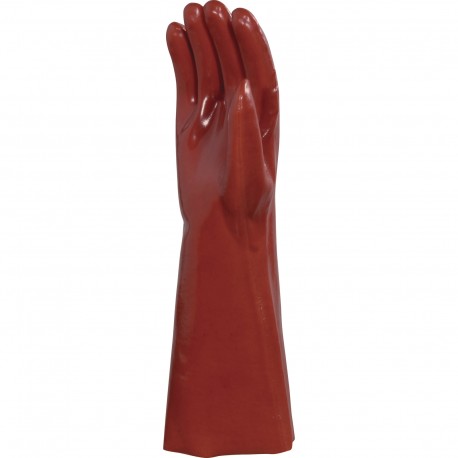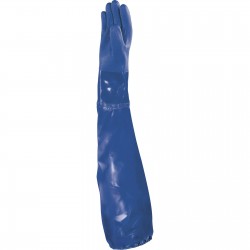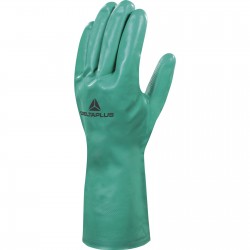PVC C400
PVCC400
สินค้าใหม่
Chemical PVC glove. PVC on cotton jersey lining. Length: 40 cm. Thickness: 1,3 mm.
รายละเอียดเพิ่มเติม
Product specifications
Glove: 100% PVC vulcanized and coated on cotton jersey support. Thickness : 1,20 - 1,40 mm
Strong points:
PVC:
# Excellent resistance to abrasion ;
# Repels oils chemical products and petrol derivated
Instructions for use:
Protective glove against mechanical risks designed for general use against chemical hazards, micro-organisms (bacteria, fungi), water and airtight, with no danger of electrical or thermal risks.
Limits to use:
Do not use this glove of the scope of use defined in the instructions above. Do not use with corrosive, toxic or irritant chemical products other than those mentioned in the performances without prior tests.This glove does not contain substance known as being carcinogenic, neither toxic, nor likely to cause allergies to the sensitive people. Ensure your gloves are intact before and during using its and replace if necessary.
Performances :
The levels are obtained on the palm of the glove. They are in increasing levels of performance (from 0 to 4 or 5 or 6). 0 indicates that the glove has a lower performance level than the minimum for the individual hazard given. X: indicates that the glove has not been subjected to testing or the test method is not suitable due to the design of the gloves or the material.
The higher the performance, the greater the ability of the glove to withstand the associated risk. Performance levels are based on the results of laboratory tests, which do not necessarily reflect real conditions in the workplace, due to the influence of the other various factors such as the temperature, the abrasion, the dissipation...
- Abrasion (from 0 to 4): Ability of the glove to withstand wear
- Cutting (from 0 to 5): Ability of the glove to withstand cutting
- Tearing (from 0 to 4): Ability of the glove to withstand tearing
- Puncture (from 0 to 4): Ability of the glove to withstand puncture
- Dexterity (from 0 to 5): Manual ability to accomplish a task
- Penetration (from 1 to 3): Diffusion, at a molecular scale, of a chemical product and/or a micro-organism through porosities, seams, micro-holes or other imperfections presents in the protective glove material.
- Permeation (from 0 to 6): Process by which a chemical product diffuses through the material of a protective glove, at the molecular scale.
This glove complies with the European directive 89/686, notably regarding ergonomics, innocuousness, comfort, ventilation and flexibility, with EN420:2003 (dexterity 5), EN388:2003 (4,1,2,1), EN374-1 :2003. Tested according to the standards EN374-2:2003 determination of penetration resistance (level 2, AQL<1,5) and EN374-3:2003 levels of permeation from 1 to 6 (A : methanol = 2, K : Sodium hydroxyde 40% (NaOH ) = 6, L: sulphuric acid (96%) =3).
PPE DIRECTIVE 89/686/EEC
EN388:2003 Protective gloves against mechanical Risks (Levels obtained on the palm)
4 : Resistance to abrasion (from 0 to 4)
1 : Resistance to cut (from 0 to 5)
2 : Resistance to tear (from 0 to 4)
1 : Resistance to perforation (from 0 to 4)
EN420:2003 General requirements
EN374-3:2003 Protective gloves against chemicals and micro-organisms - Part 3: Determination of resistance to permeation by chemicals
AKL : Resistant gloves to permeation by chemicals, tested according to EN374-3
EN374-2:2003 Protective gloves against chemicals and micro-organisms - Part 2: Determination of resistance to penetration
AQL<1.5 : Resistant gloves to micro-organisms (bacteria, mushrooms), tested according to EN374-2

























